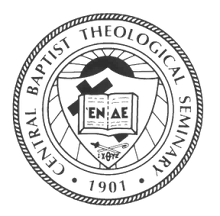The ascension marks the end of Eastertide, 40 days after the
resurrection,
and the disciples are poised to wait for the promised power
and abiding presence of the Holy Spirit.
Luke-Acts offers a rich tableau of Jesus’ departure:
Then he led them out as far as Bethany, and
lifting up his hands, he blessed
them. While he was blessing them, he withdrew from
them and was carried
up into heaven. (Luke 24:50-51)
Again, Luke portrays the exaltation to heaven. After promising the coming of the Holy Spirit
in power, to be recognized at Pentecost, he ascended:
. . . as they were watching, he was lifted up, and a
cloud took him out of their
sight. (Acts 1:9)
Another stunning event sets the framework for the expanded
vocation of the disciples. They are to
bear witness in Jerusalem, in all Judea and Samaria, and to the ends of the
earth (v. 8). The Risen Christ will not
be absent, but present as empowering Spirit for this mission.
I remember
visiting the Chapel of the Ascension in Jerusalem many years ago and marveling
at the significance of this meta-historical event for the ongoing life of the
church. Situated on the Mount of Olives
since the 4th century, this small stone shrine is venerated as a
holy place by both Christians and Muslims.
The early creeds declared as a matter of orthodox faith: “He ascended
into heaven, and sits at the right hand of God . . .”
The early
church pondered what the ascended Jesus is doing from this position of honor,
and we wonder, also. Contemporary theologians
note: “Jesus rose with his wounds,” which tells us that his humanity continues
and that nothing that mars our lives is far from God’s safekeeping and the
promise of transformation. By taking the
scars of the incarnation into heaven, Jesus reveals that the whole of human
identity can be redeemed.
Ascension
concludes the earthly ministry of Jesus, and it reveals that God deemed it to
be successful. Given the place of
authority alongside the Sending One, Jesus as the Christ draws our humanity
close to God through intercession and advocacy.
As Hebrews puts it,
. . . He had to become like his brothers and
sisters in every respect, so that he
might be a merciful and faithful
high priest in the service of God (Hebrews
2:17).
Christ serves God by embodying earthly living, acquainting
God with all the frailty and exigency of the human condition; he serves
humanity by offering a “new and living way” to enter God’s eternity, with
joy. For these reasons, and many more,
we celebrate the Ascension.
Molly T.
Marshall
To
learn more about Central as a formative, creative, and progressive seminary,
continue visiting our website.


No comments:
Post a Comment